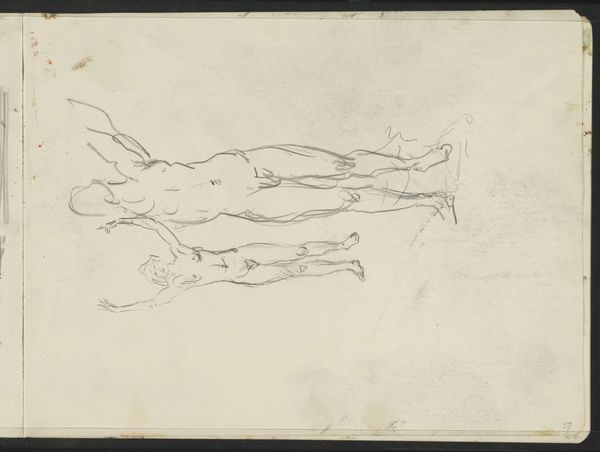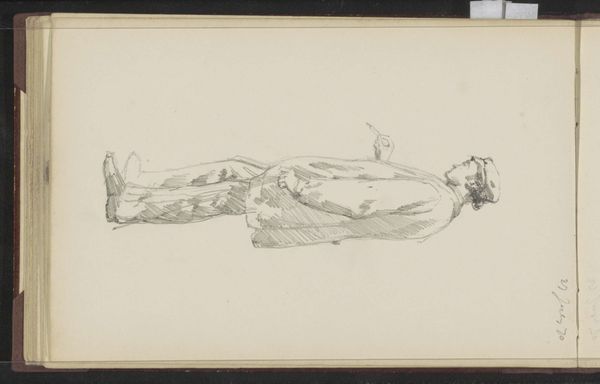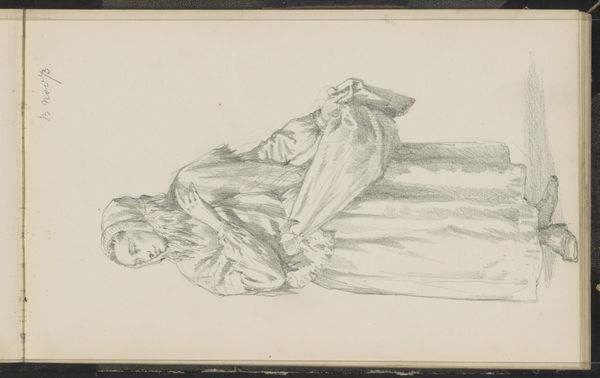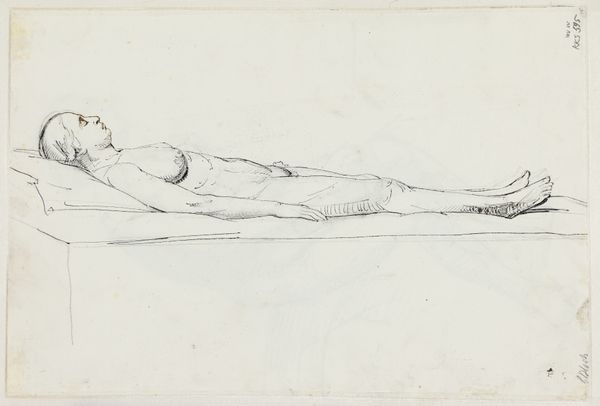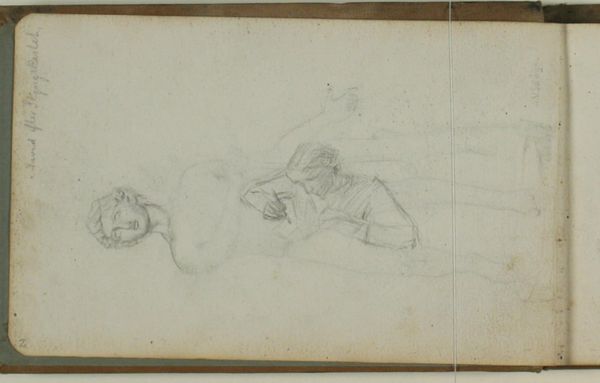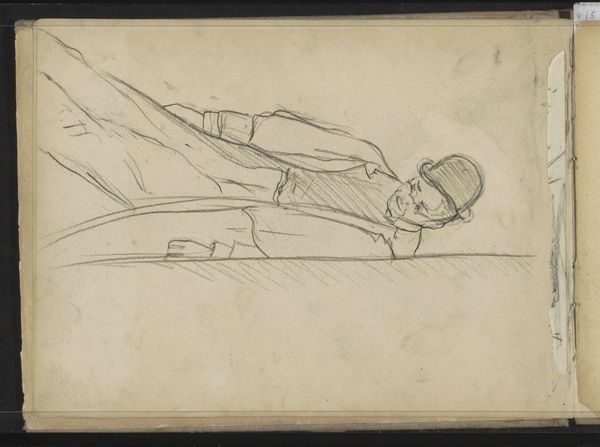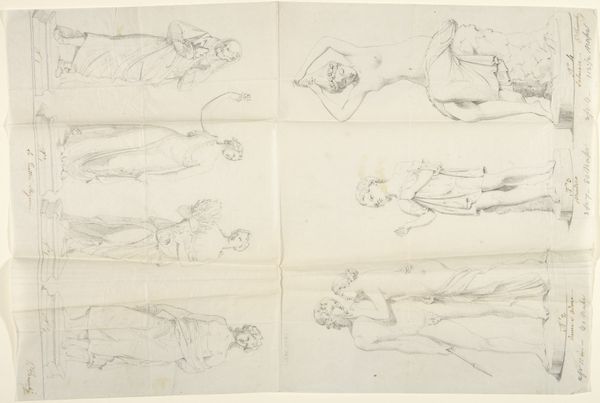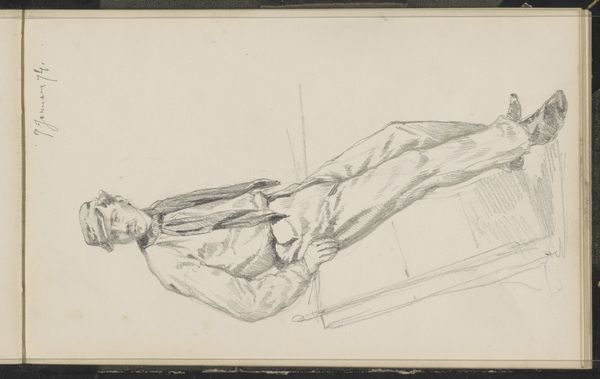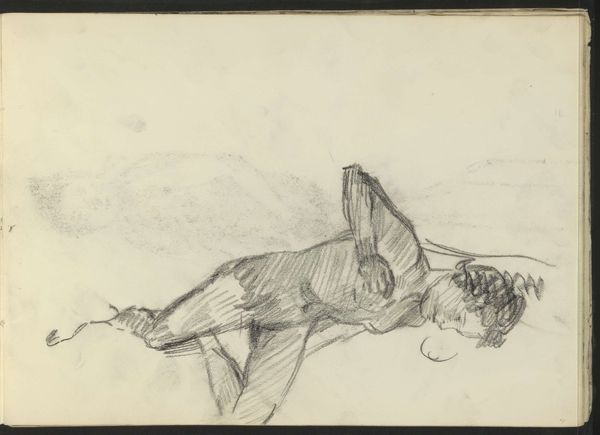
Studie af liggende soldat til "Kristi opstandelse", desuden detailstudier af benene og en venstre arm 1923 - 1924
0:00
0:00
drawing, pencil
#
portrait
#
drawing
#
figuration
#
pencil
Dimensions: 360 mm (height) x 260 mm (width) (bladmaal)
Editor: This is a pencil drawing by Niels Larsen Stevns, created around 1923-24. It's a study for his painting "Resurrection of Christ", depicting a fallen soldier. The sketch feels fragmented to me, like glimpses into the process of creation. What’s your take on it? Curator: I am fascinated by the raw materiality of this sketch. It isn’t the finished piece, of course; rather, it displays the artist’s labor and the way a figure comes together from raw materials. Do you notice the artist experimenting with various poses? This offers us a rare insight into Stevns’ working process. Editor: I do see how the artist uses line to define volume. Is it unusual to see a religious scene conveyed through this more practical, almost industrial-feeling approach? Curator: Precisely. Often, we consider drawings a lower artform than painting. This drawing, though, offers insight into art production, where religious fervor and spiritual ideas come directly from labor. Notice how the material nature of the pencil marks dictates the form and therefore the subject. Editor: That’s really interesting. So you’re saying the humbleness of the medium—the pencil and paper—actually enhances our understanding of the themes of resurrection? It grounds them somehow? Curator: Exactly. It's a study in materiality. It makes you consider where the sublime actually originates and whose hands brought it to the paper. It isn't divinely given, it’s hard work and choice. Editor: I’ve never thought about art in quite this way. Now I see how the choice of material impacts the final interpretation. Thanks! Curator: Indeed. Thinking about artistic processes in terms of production allows a critical view on art history and offers ways to deconstruct traditions, particularly surrounding high art.
Comments
No comments
Be the first to comment and join the conversation on the ultimate creative platform.
